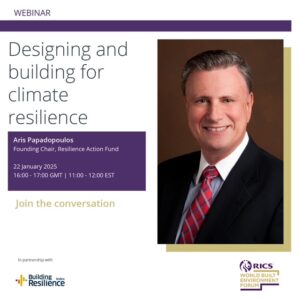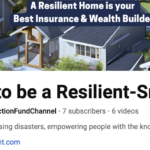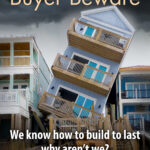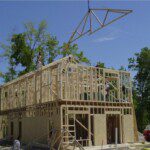If you’re looking for a single-family home, you probably face buyer competition. As urban apartment-dwellers seek more space and less density, you may end-up paying a premium. Some buyers target properties below their budget to allow, if needed, room to bid above the asking price. Are there any smart buying strategies?
The answer is ‘yes’. Armed with knowledge, you could get something extra that most other buyers don’t see. Something that even many sellers haven’t fully valued. That ‘something’ is Resilience, meaning features that help a home better withstand natural hazards.
Depending on the location, these hazards can include hurricanes, tornados, floods, fires and in some areas, earthquakes. All places have some form of fire and water hazard. Most areas east of the Rockies face tornados, hurricanes or wind downbursts. The Pacific Coast and certain parts of the east central US are prone to earthquakes.
Most realtors and appraisers don’t understand and haven’t yet figured how to value resilience features. As a result, many sellers leave money on the table. They rely on so-called ‘sales comparables’, that really aren’t so comparable when it comes to vulnerability.
However, if you train to spot them you could get these valuable extras for free. At least you’ll make full or premium price offers on resilient properties, not vulnerable ones.
Below are 5 resilience features you can easily look for and the estimated extra value of each:
- The property’s Flood Factor® score. It’s free (www.floodfactor.com) and you only need an address. A property that scores 3 or less, meaning low flood risk, is worth an extra 10-15%. 5-10% more if it scores 4-6 (all compared to similar-sized properties scoring 7+). Flooding is the most common and expensive hazard that homes face. It mostly depends on location, but government maps do a poor job disclosing the full risk.
- A house built with concrete (poured, reinforced blocks or insulated concrete forms) is worth an extra 5-10%. This can better protect you from fires, winds and earthquakes. It likely also means lower insurance and maintenance costs.
- A low-profile hip roof, with heavy tiles or metal covering is worth an extra 3-5%. Heavy concrete tile or metal hip roofs better withstand strong winds, hail and resist fire. They typically have twice the life-span of other roofs.
- If the house is made of wood, non-combustible siding could be worth an extra 2-3%. Most houses on the market are wood, but those with non-combustible siding better resist fire and wind. This siding can include cement-fiber boards, cement stucco, bricks or stone.
- A house with permanent standby power generation is worth an extra 1-2%. We’re not talking about portable units that are inconvenient and in some cases dangerous. Power loss is common during storms and heat waves. A generator that automatically kicks-in will provide peace of mind, savings and convenience. Think of all the food you won’t be throwing away. For the elderly it could be a life-saver. Size-wise, 10KW for every 1000sf of living space should cover you. The recommended fuel configuration is natural gas, with a back-up propane tank that can last a week. In the future, solar batteries may become efficient and cheap enough to do the job.
So while realtors focus other buyers on cosmetics like kitchens, closets and bathrooms, you spot and ask about resilience features that protect your family and investment. Then add-up the extra value when comparing with homes that lack these features. Any value you don’t spend is to your benefit.
Isn’t it better to pay full or premium price on a home that will last and protect you for many years, instead of one that won’t? It can also save on insurance, maintenance and evacuation costs. Not to mention the significance of greater peace of mind.
Investment-wise, as more people learn and appreciate the advantages of resilience, these properties will likely grow more in resale value, compared to others that are vulnerable. Climate can only make this bigger and sooner. Use these ‘homebuying secrets’ and get ahead of the curve.









